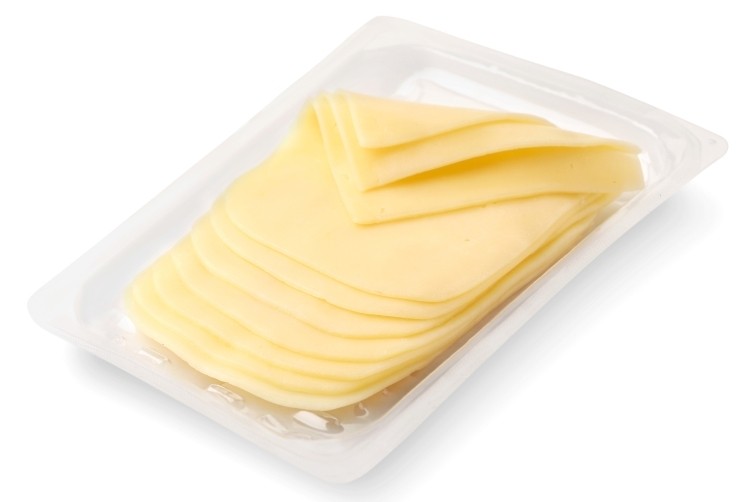HK Consumer Council tests lead to cheese consumption amount warning for fat and sodium

The council said consumers should eat in moderation to avoid health risks such as obesity or high blood pressure resulting from long-term excess intake of fat and sodium.
Forty samples of cheese were included in the test, including 28 samples of natural cheese such as Cheddar, mozzarella, Parmesan, and goat/sheep’s milk cheese, with retail prices from HK$15 (US$1.93) to HK$71 (US$9.16) per 100g. The other 12 tested samples were processed cheese, including high-calcium processed cheese, high-calcium reduced fat processed cheese, processed cheese for kids, and smoked cheese, with retail prices from HK$12.45 (US$1.61) to HK$45 (US$5.80) per 100g. Test items covered preservatives, microbiological and nutrient contents.
The council said tests confirmed cheese was high in protein and calcium contents: 90% (36 samples) of the tested cheeses reached high-protein level (containing no less than 12g protein per 100g sample) and high-calcium level (containing no less than 240mg calcium per 100g solid food sample).
Upon comparing the nutrient content per 100g sample, the natural cheese category showed a higher average protein content (22.5g) than the processed cheese category (17.6g), with Parmesan containing the highest average protein content (30g) while cheddar ranked second (23g). On the other hand, the average calcium content of the processed cheese category (876mg) was higher than that of the natural cheese category (633mg). Of all the samples, high-calcium reduced fat processed cheese had the highest average calcium content (1,450mg) and Parmesan was next with 962mg.
The council noted that while many parents like to include cheese in their children’s diet as a source of protein and calcium to promote growth, the test revealed processed cheese for kids had the lowest average protein content (14g). In this category, the processed cheese for kids sample with the lowest protein content (10.4g) also had the lowest calcium content (199mg) amongst all samples. One standard serving (12g) of this sample for children would only provide a calcium intake of 24mg, only 4% of the reference daily intake (600mg) for 1- to 3-year-old infants as recommended by the Chinese Nutrition Society. Except those with nutrition claims, it is not mandated by legislation to include calcium content in the labeling information, but calcium content is an important deciding factor for consumers when purchasing cheese products, the council said. In view of this, it urged manufacturers to enhance the transparency of product information on a voluntary basis.
Salt is often added during the production of natural cheese. The test results revealed more than 25 samples reached the high-sodium food level (more than 600mg sodium content per 100g solid food sample). On comparing the content per 100g sample, the processed cheese category had an average sodium content of 1,194mg, which doubled that of the natural cheese category at 595mg. Of these, one sample of high-calcium reduced fat processed cheese had the highest sodium content of 1,660mg. The council said based on a 2,000-calorie diet for an adult, consumption of one slice (20.8g) of this cheese sample would mean a sodium intake of around 345mg, or 17% of the daily maximum intake limit (2,000mg sodium) recommended by the World Health Organisation (WHO).
The test results also showed more than 70% (29 samples) reached the high-fat food level (more than 20g total fat content per 100g sample). On comparing the content per 100g sample, the natural cheese category had a higher average total fat content (26.7g) than the processed cheese category (22.6g). One sample of sheep’s milk cheese had the highest total fat content of 37.7g; should an adult consume 1 portion (26g) of this sample, they would have a total fat intake of 9.8g; around 16% of the daily intake limit (60g) recommended by WHO. In addition, the council noted although two samples of high-calcium processed cheese were labeled as reduced fat, their total fat contents were as high as 14g and 13.4g respectively, and thus not low-fat food (containing no more than 3g total fat per 100g sample).
The test samples showed variation in terms of their trans-fat content, with an 8.5 times difference between the samples with the highest (1.9g) and lowest (0.2g) trans-fat content. Based on the content per 100g sample, one Parmesan cheese sample had the highest trans-fat content; if an adult consumed one portion (26g) of this sample, they would have a trans-fat intake of 23% of the maximum daily intake limit (2.2g) recommended by WHO.
The council also inspected the label information of the pre-packaged cheese samples and found four samples showed a significant difference in nutrient content in the test than declared, exceeding the acceptable tolerance range in technical guidelines. Four samples declared 0g/100g in trans fat but the test results showed they had more than 0.3g/100g trans fat. One sample had two different ingredient lists on its packaging. This information was passed to the Centre for Food Safety for follow-up action.








